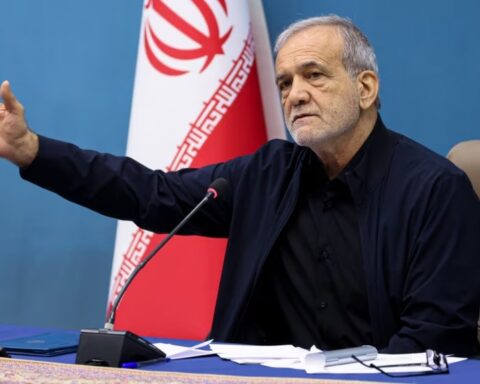In a dramatic escalation following a deadly militant attack in Indian-administered Kashmir, India launched missile strikes on alleged terrorist sites in Pakistan, prompting Pakistan to claim it shot down five Indian fighter jets in retaliation.
The strikes, targeting what India calls “terrorist infrastructure,” have intensified tensions between the nuclear-armed neighbors, raising fears of a broader conflict in the volatile Kashmir region. Pakistan’s assertion of downing Indian planes, coupled with its vow to respond to what it calls an “act of war,” has placed the subcontinent on edge.
On May 7, 2025, the Himalayan region of Kashmir, long a flashpoint between India and Pakistan, witnessed its most severe military confrontation in over two decades. The Indian Air Force conducted “Operation Sindoor,” striking nine sites in Pakistan’s Punjab province and Pakistan-administered Kashmir, in response to the April 22 massacre of 26 tourists in Pahalgam, a scenic resort town in Indian-administered Kashmir. Pakistan, denying involvement in the attack, reported eight civilian deaths and 35 injuries from the strikes, condemning India’s actions as “cowardly” and claiming to have downed five Indian jets, including advanced Rafale fighters. India has not confirmed the loss of any aircraft, and independent verification remains elusive, leaving the region braced for further escalation.
A Deadly Catalyst in Pahalgam
The roots of this crisis trace back to the April 22 attack in Pahalgam, where gunmen killed 25 Indian tourists and one Nepali citizen in a brutal assault that shocked the nation. The attack, one of the deadliest against civilians in years, targeted a popular tourist destination known for its lush meadows and Himalayan vistas. Indian authorities swiftly blamed Pakistan-based militant groups, specifically Jaish-e-Mohammed and Lashkar-e-Taiba, alleging they orchestrated the massacre from across the border. Pakistan denied the accusations, calling for a “neutral” investigation and condemning the attack as the work of a previously unknown group, the Kashmir Resistance.
The massacre ignited widespread outrage in India, placing immense pressure on Prime Minister Narendra Modi’s Hindu-nationalist government to retaliate. Modi, who has cultivated a strongman image, faced calls from his base to punish Pakistan, with some opposition leaders even urging India to reclaim Pakistan-administered Kashmir. In the weeks following the attack, India closed its main border crossing with Pakistan, suspended the Indus Water Treaty, and expelled Pakistani diplomats, actions mirrored by Islamabad. The stage was set for a military response, with Indian officials citing “credible intelligence” of planned attacks as justification for the strikes.
India Strikes Pakistan After Kashmir Massacre
On Wednesday morning, India launched “Operation Sindoor,” a series of pre-dawn missile strikes targeting nine sites it described as “terrorist infrastructure” in Pakistan’s Punjab province and Pakistan-administered Kashmir. The operation, named after the red vermilion worn by married Hindu women—an apparent reference to the widows left by the Pahalgam attack—was the deepest Indian incursion into Pakistani territory since the 1971 Indo-Pakistani War. Indian officials claimed the strikes hit militant headquarters linked to the Pahalgam attack, asserting they were “measured, responsible, and non-escalatory” and avoided Pakistani military facilities.
Pakistan, however, painted a starkly different picture. Prime Minister Shehbaz Sharif called the strikes an “act of war,” reporting that six civilian locations, including a mosque in Bahawalpur and another in Muzaffarabad, were hit, killing eight people, including children, and wounding 35. Residents near the Bilal Mosque in Muzaffarabad described chaos as explosions shook their homes, with one local, Muhammad Waheed, telling the BBC, “I don’t understand why our mosque was targeted. This was a normal neighborhood mosque.” Pakistan’s military claimed it shot down five Indian jets—three Rafale fighters, one SU-30, and one MiG-29—along with a drone, though India has not confirmed these losses.
Pakistan’s Retaliation and Claims of Downed Jets
Pakistan’s assertion that it downed five Indian jets has added a contentious layer to the crisis. Lieutenant General Ahmed Sharif Chaudhary, a Pakistani military spokesperson, claimed the jets were shot down in “self-defense,” with some wreckage reportedly falling in Indian-administered Kashmir. Social media posts on X amplified these claims, with users citing unverified reports of destroyed Indian military posts and airbases. However, India has remained silent on the alleged losses, and CNN reported that it could not independently verify Pakistan’s claims. Local sources in Indian-administered Kashmir told Reuters that three fighter jets crashed in the region, with pilots hospitalized, but no official Indian confirmation has emerged.
The exchange of fire extended beyond airstrikes, with heavy artillery and shelling reported along the Line of Control (LoC), the de facto border dividing Kashmir. In Poonch, Indian officials reported eight civilian deaths and 29 injuries from Pakistani shelling, while Pakistan claimed three civilians were killed on its side. Both nations have closed their airspaces to each other’s airlines, disrupting international flights, and schools and hospitals in border areas are on high alert. The escalation has drawn comparisons to the 2019 Balakot airstrike, when Pakistan shot down an Indian jet and captured its pilot, though the current crisis appears more severe.
A Region Steeped in Conflict
Kashmir has been a perennial source of animosity since India and Pakistan gained independence in 1947. Both nations claim the region in full but control only parts, with the LoC serving as a heavily militarized divide. The two countries have fought three wars over Kashmir, with India facing a decades-long insurgency in its portion, fueled by local discontent and alleged Pakistani support. Modi’s 2019 revocation of Kashmir’s semi-autonomous status was touted as a step toward stability, but attacks like the one in Pahalgam have exposed persistent vulnerabilities.
The Pahalgam massacre shattered India’s narrative of a pacified Kashmir, where tourism had surged to 3.5 million visitors in 2024. The attack prompted a sweeping crackdown, with over 1,500 arrests and the demolition of suspected militants’ homes, actions critics say risk alienating Kashmir’s Muslim-majority population. India’s strikes on Pakistan reflect a broader strategy of projecting strength, but analysts warn of the risks. “If the war escalates, even if not to the nuclear threshold, it is very likely to hold grave consequences,” said Derek J. Grossman, a defense analyst at the RAND Corporation.
Global Concerns and Diplomatic Efforts
The international community has responded with alarm. United Nations Secretary-General António Guterres urged both nations to “avoid a military confrontation that could easily spin out of control,” calling a military solution “no solution.” The United States, closely monitoring the situation, reiterated calls for restraint, while China, a Pakistani ally, expressed regret over India’s actions and urged calm. Diplomatic efforts have so far failed to de-escalate tensions, with both countries scaling back diplomatic ties and suspending bilateral agreements.
The strikes have disrupted regional stability, with commercial airlines avoiding Pakistani airspace and India’s stock market dipping in response to the crisis. The closure of Srinagar’s airport and the suspension of infrastructure projects, like the world’s highest single-arch rail bridge, underscore the economic toll. For Kashmiris, the human cost is paramount. “We’re caught in the middle,” said a Poonch resident, Buava Singh, whose niece was killed in shelling. “All we want is peace.”
The Path Forward
As both nations brace for potential retaliation, the specter of nuclear conflict looms, though analysts believe neither side seeks all-out war. India’s strikes, while bold, reflect domestic political pressures, with Modi’s Bharatiya Janata Party (BJP) leveraging the crisis to rally nationalist sentiment. Pakistan, facing economic challenges, may opt for measured retaliation to avoid further escalation. The international community’s role will be critical in preventing a spiral, but the lack of trust between New Delhi and Islamabad complicates mediation.
For the people of Kashmir, the cycle of violence offers little hope. The Pahalgam attack and its aftermath have devastated the region’s tourism-driven economy, with local business owners like shawl-seller Rafi Ahmed lamenting, “Who will come now?” As evacuations continue in vulnerable border areas and military posturing intensifies, the region remains a tinderbox, with the world watching anxiously for signs of de-escalation.
Focus Keywords: India strikes Pakistan, Kashmir massacre, Pakistan downs Indian jets, Operation Sindoor, India-Pakistan tensions, Pahalgam attack, nuclear-armed neighbors, Line of Control, terrorist infrastructure, civilian casualties

















